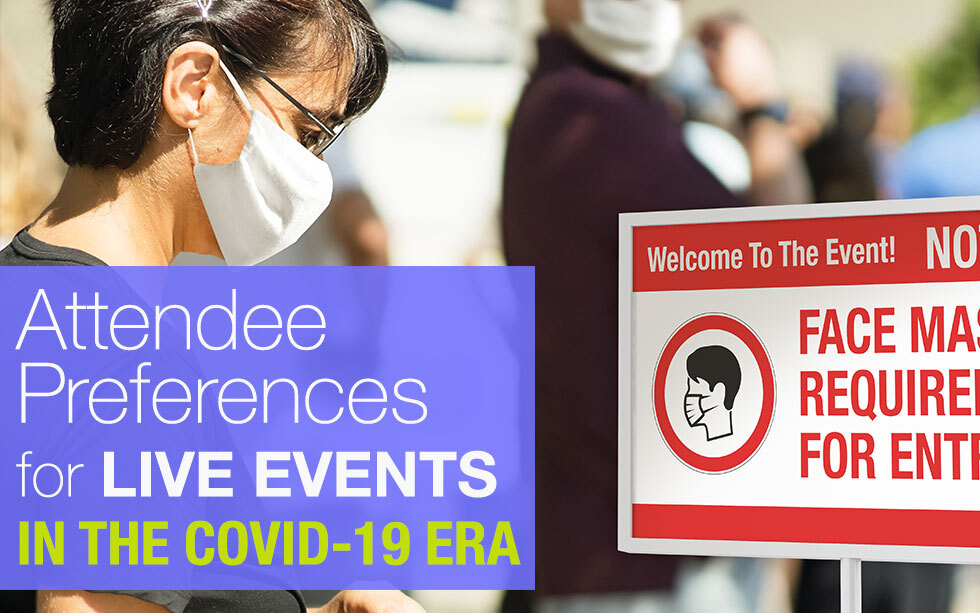New Research Reveals Attendees’ Preferences for Live Events in the COVID-19 Era
You may have seen the news headlines or social media clips of a ten thousand plus crowd watching Eric Chou, a Taiwanese singer-songwriter, perform in Taiwan – the first event of its kind since the pandemic began.
Tickets for the performer’s four concerts – at indoor venues nonetheless – sold out in 15 minutes, showing just how high demand is for the return of live events.
But the concert was far from the typical pre-COVID experience. For starters, all attendees were required to wear and keep masks on throughout the show. Temperature checks were conducted at the entrance points, and all attendees provided contact information to receive a QR code that can be used for contact tracing if needed. Other public health measures included tables filled with masks and alcohol wipes.
Taiwan’s early enactment of strong procedures and protocols spared the island of large COVID case numbers seen elsewhere around the globe, which is one significant factor in the rapid return to large-scale events.
But separate from the country’s response to the pandemic, the experience provides event and meeting planners with a valuable glimpse as to what live events might look like before a vaccine is available.
As many begin planning for 2021 and are wondering what to expect for live events, the Event Leadership Institute (ELI) recently set out to provide planners with data and insights around how guests feel about attending on-site events – including the health protocols and procedures they expect to feel safe.
Between July 7-31, 2020, we conducted an online survey and heard from 764 event and meeting planners, agencies, and other industry vendors and suppliers.
The findings have been compiled and are now available in the brand new report, “Attendee Preferences for Live Events in the COVID-19 Era.”
Here’s a quick peek at several insights from the report:
- Ninety-six percent of attendees expect organizers and planners to provide a clear statement and agreement for all participants to follow event rules.
- Eighty-two percent of respondents expect organizers and planners to remove anyone not living up to the rules, with 81 percent also calling for the removal of any attendees who break the rules.
- A full 90 percent of attendees rank the availability of hand sanitizer everywhere as very important, with 87 percent also saying it’s essential for all attendees to wear a mask.
- The survey also revealed 75 percent feel comfortable driving within 2-hours to be a part of an event – and 16 percent are leery of traveling anywhere right now.
Download the full report
According to Michael Granek, ELI President and COO, “while many of the results are as expected, overall, the findings illustrate the new in-person event strategy and design considerations planners will need to address for audience safety and peace-of-mind.”
He explains that “the survey results also show how far-ranging the design considerations are — the pandemic has impacted everything from risk management to venue protocols to contracts, food and beverage, and marketing.”
Getting to a scenario where both small and large-scale in-person events are back on the calendars takes cautious, strategic planning – and the right design strategy that checks the boxes on many new questions.
To help planners navigate these waters, ELI will cover these report findings and other insights for in-person event strategy and design as part of its newest online certificate course, “Pandemic Meeting & Event Design.” The online certificate course is designed to provide planners with the resources to implement safer event design.
The first six-week course kicks-off on September 1, and the second begins October 27. Developed in partnership with MPI, the course is eligible for 20 Certified Meeting Professional (CMP) continuing education credits.
Learn more and save your seat to learn more about ELI’s new research.


